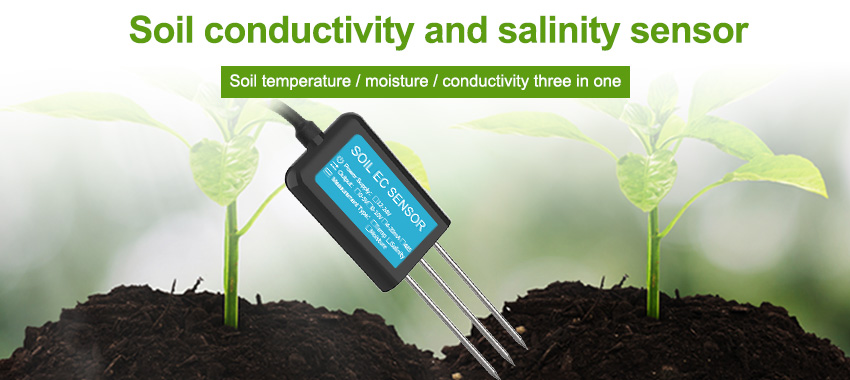Significance of soil salinity sensors for plants
This portable soil salinity sensors adopts the latest digital integrated circuit technology and international testing technology to design a new type of intelligent handheld tester.

Annuals on saline-alkali soils experience high salinity as the soil first wets, then decreases in salinity as more water fills the pores and seeps through the profile, then increases in salinity as the season ends and the soil dries out. Mature perennials buffer this change by being exposed to deeper, potentially lower salinity water for longer periods of time.
When measuring salinity levels at a site, a few centimetres of the surface are most important for annual and perennial seeds, while subsoil salinity is more important for established perennials. Soil samples used for testing need to reflect this difference.
Estimating soil salinity from EC
EC meters are a cheap and easy way for estimating salinity: the higher the conductivity reading, the higher the salt content. Prices range from less than $200 for simple handheld field-use meter, to more than $1000 for more advanced field or laboratory style testers. These meters give results in EC or converted to estimated total dissolved solids .
How to use soil salinity sensors
1. Quick test method
To measure the position, avoid rocks and ensure that the steel needle does not touch hard objects. Discard the top soil at the required measurement depth, keeping the original tightness of the soil below, and insert the sensor vertically into the soil. Don’t rock from side to side. It is recommended to measure the average multiple times in a small area of a measurement point.
2, buried measurement method
Dig a pit with a diameter >20cm vertically, insert the induction needle horizontally into the pit wall to a predetermined depth, and fill the pit tightly. After a period of stabilization, measurements and recordings can be made for days, months, or even longer.